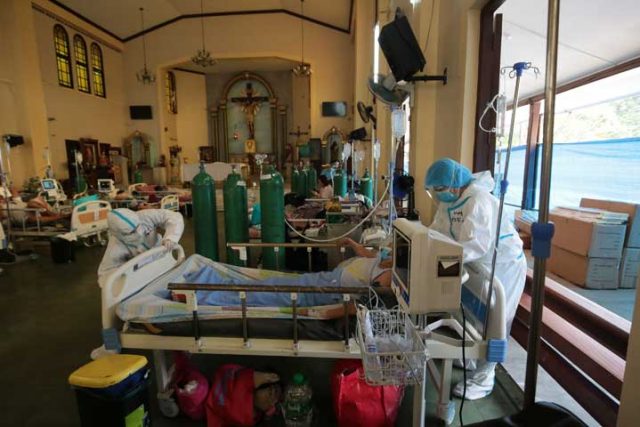
The economic recovery of the Philippines and rest of Southeast Asia may be pushed back to 2023, amid the threat of new and more contagious coronavirus disease 2019 (COVID-19) variants, Oxford Economics said.
Philippine gross domestic product (GDP) is expected to grow by 3.5% this year, Makoto Tsuchiya, economist at the think tank, said in an email.
This is more pessimistic than the 4.5% it gave last month and is also below the 4-5% full-year target of the government.
“If new virus variants result in another global lockdown, we expect ASEAN’s growth recovery will be further delayed to 2023 from 2022,” Sung Eun Jung, a senior economist at Oxford Economics said in a note on Friday.
Mr. Jung said this will be the case in a “long COVID-19” scenario which would require the need for stricter lockdowns and in turn, result in persistent risk aversion.
“In our baseline, for most of our ASEAN-6 economies, we forecast above-trend growth next year. But in this downside scenario, we would expect these above-trend growths to be further delayed to 2023,” Mr. Jung said in an email.
The World Health Organization (WHO) has said that the more infectious Delta has become the dominant variant in the Philippines. The Lambda variant, which was first identified in Peru and is considered a variant of interest by the WHO, was also already detected in the Philippines by mid-August.
New COVID-19 cases on Friday rose by 20,310, the second highest daily tally since the pandemic began. This brought the total active cases to 158,994, based on data from the Department of Health.
Oxford Economics said the new wave of infections which resulted to tighter restriction measures is expected to hurt third quarter growth in the Philippines and across the region.
The research firm expects the Philippine economy to grow by 4.3% for the July to September period. Metro Manila was placed under the most stringent form of lockdown for two weeks in August, and is currently under modified enhanced community quarantine until Sept. 7.
In the second quarter, GDP rose 11.8% year-on-year but declined by a seasonally adjusted 1.3% quarter on quarter.
“The main threat remains the Delta variant and the possible tightening/extension of the restrictions. This is especially the case given the rising COVID-19 cases and a low vaccination rate, with only less than 13% of the total population fully vaccinated,” Mr. Tsuchiya said in an email.
“Tighter social distancing measures would weigh on sentiment and consumer spending, particularly on social spending,” he added.
Household spending, which accounts for about 70% of the economy, rose 7.2% year on year in the second quarter. Seasonally adjusted, it declined by 2.4% in the second quarter versus last year’s -13.3% contraction.
Meanwhile, Mr. Tsuchiya said the manufacturing sector will likely benefit from relatively strong external demand, making it likely perform to perform better than the services sector.
However, he cautioned the new surge in infections in the ASEAN region could pose risks for manufacturing and exports.
“The short-term manufacturing and export outlook faces several headwinds, including lower growth expectations among major trading partners and supply disruptions due to renewed COVID-19 outbreaks in the region,” he said.
New virus variants could push ASEAN recovery to 2023
Source: Bantay Radio
0 Comments